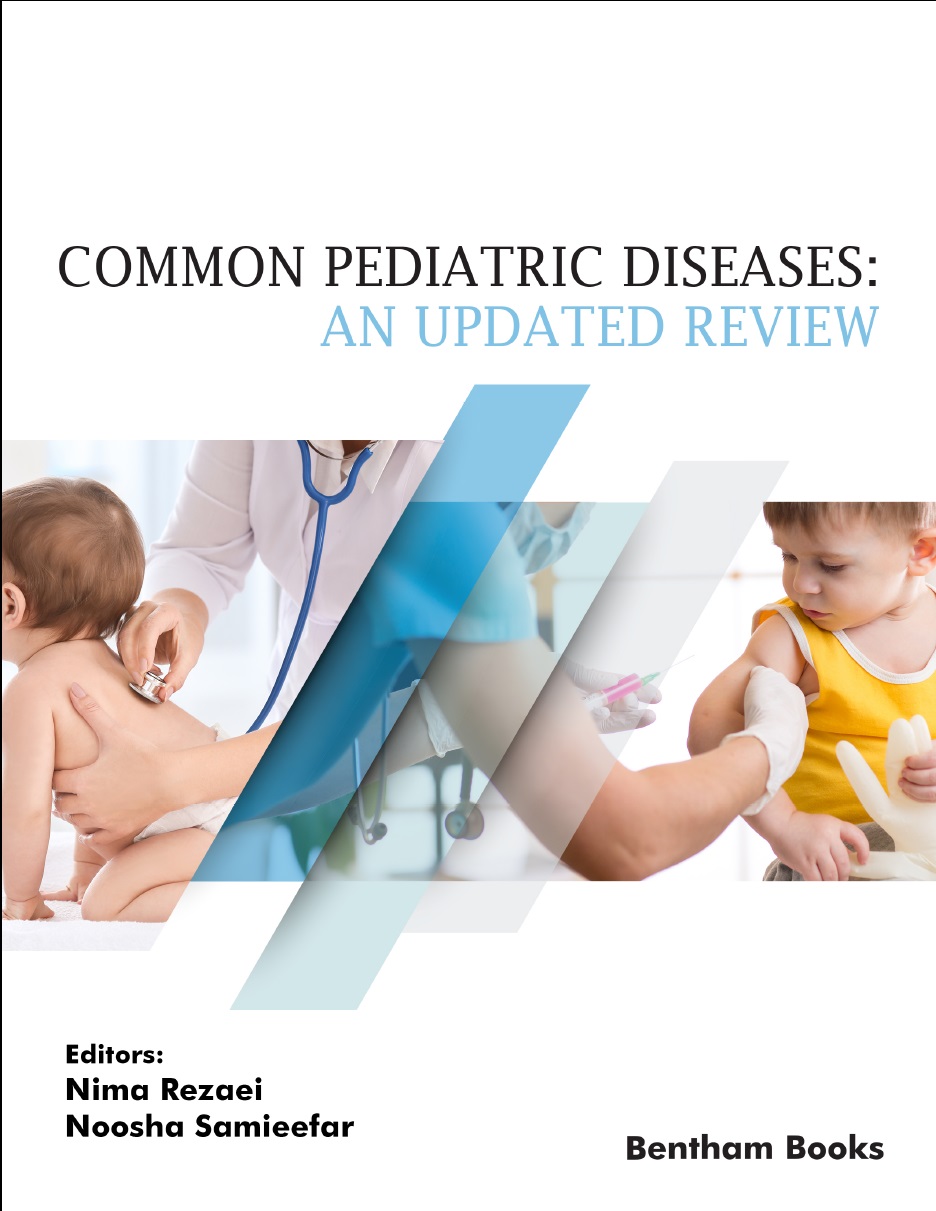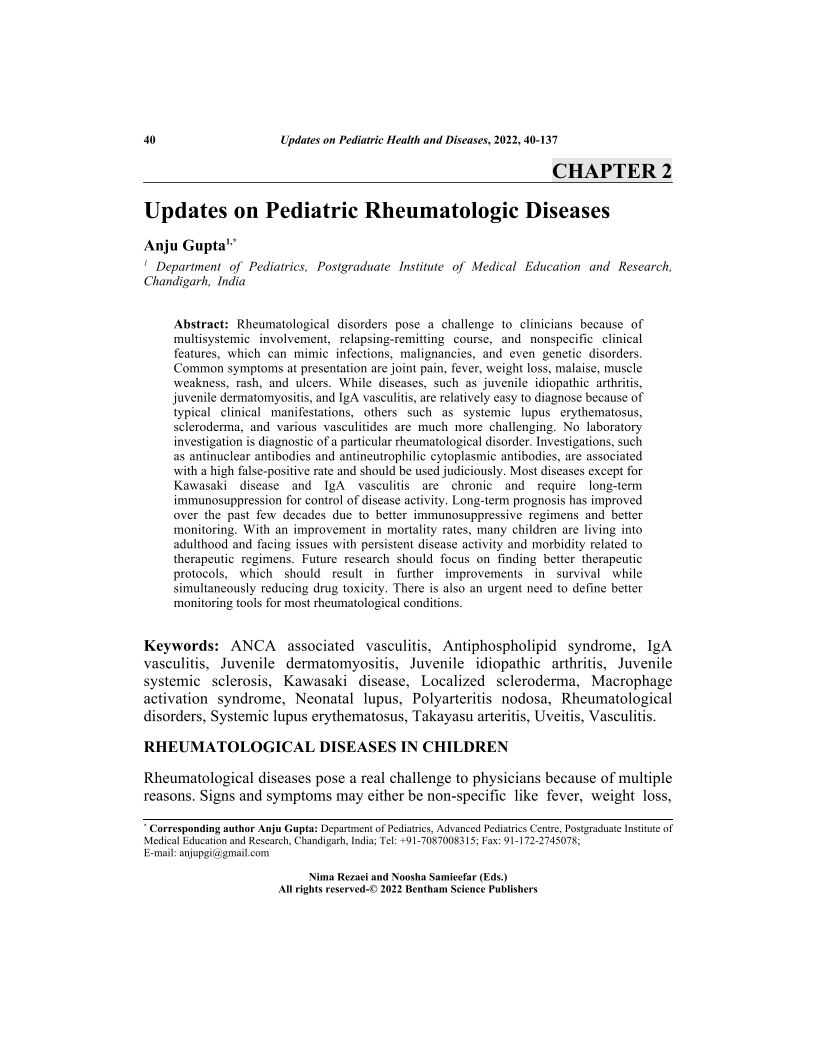Updates on Pediatric Rheumatologic Diseases

- By Anju Gupta1
-
View Affiliations Hide Affiliations1 Department of Pediatrics, Postgraduate Institute of Medical Education and Research, Chandigarh, India
- Source: Common Pediatric Diseases: an Updated Review , pp 40-137
- Publication Date: April 2022
- Language: English
Updates on Pediatric Rheumatologic Diseases, Page 1 of 1
< Previous page | Next page > /docserver/preview/fulltext/9789815039658/chap2-1.gif
Rheumatological disorders pose a challenge to clinicians because of multisystemic involvement, relapsing-remitting course, and nonspecific clinical features, which can mimic infections, malignancies, and even genetic disorders. Common symptoms at presentation are joint pain, fever, weight loss, malaise, muscle weakness, rash, and ulcers. While diseases, such as juvenile idiopathic arthritis, juvenile dermatomyositis, and IgA vasculitis, are relatively easy to diagnose because of typical clinical manifestations, others such as systemic lupus erythematosus, scleroderma, and various vasculitides are much more challenging. No laboratory investigation is diagnostic of a particular rheumatological disorder. Investigations, such as antinuclear antibodies and antineutrophilic cytoplasmic antibodies, are associated with a high false-positive rate and should be used judiciously. Most diseases except for Kawasaki disease and IgA vasculitis are chronic and require long-term immunosuppression for control of disease activity. Long-term prognosis has improved over the past few decades due to better immunosuppressive regimens and better monitoring. With an improvement in mortality rates, many children are living into adulthood and facing issues with persistent disease activity and morbidity related to therapeutic regimens. Future research should focus on finding better therapeutic protocols, which should result in further improvements in survival while simultaneously reducing drug toxicity. There is also an urgent need to define better monitoring tools for most rheumatological conditions.
-
From This Site
/content/books/9789815039658.chap2dcterms_subject,pub_keyword-contentType:Journal -contentType:Figure -contentType:Table -contentType:SupplementaryData105

